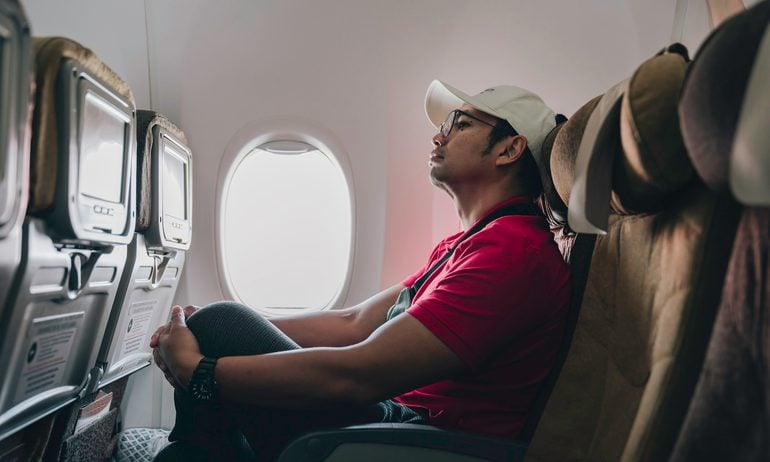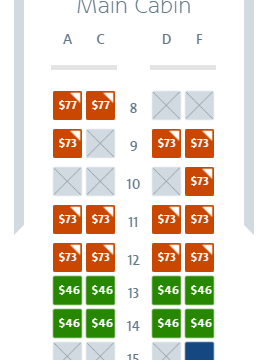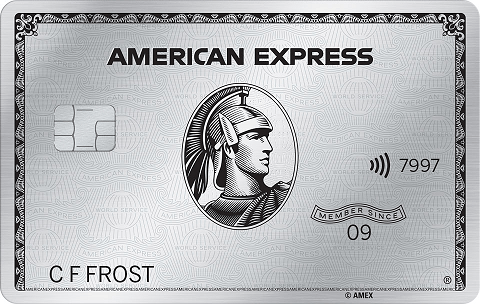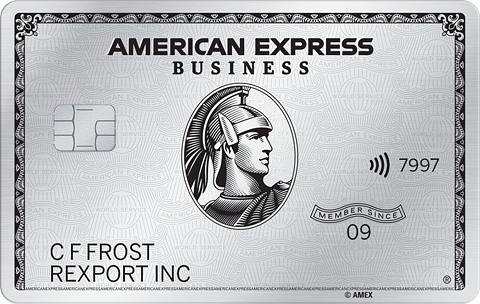Is Aisle or Window Seat Better on an Airplane?
The window seat gets you a spectacular view, but the aisle has more freedom of movement and a little extra legroom.

Many or all of the products on this page are from partners who compensate us when you click to or take an action on their website, but this does not influence our evaluations or ratings. Our opinions are our own.
When it comes to flying, most people want to avoid sitting in the dreaded middle seat. But how do you choose between an aisle or window seat?
Both seats have distinct advantages depending on how you like to travel. Learn more about the pros and cons of an aisle seat versus the window, things to consider when choosing and tips for getting the seat you want.
» Learn more: The best airline credit cards right now
Aisle seats vs. window seats
Choosing between a window seat or aisle seat depends on how you like to travel and what you plan on doing during the flight.
While many travelers prefer window seats, aisle seats have a lot to offer as well. In short, the “better” seat is a personal preference and may change based on your travel plans.
Learn more about the pros and cons of the aisle versus window seats so you’ll know which one to pick on your next trip.
Pros and cons of choosing an aisle seat
Pros of aisle seats
Unrestricted access to the aisle. The aisle seat has easy access to getting up and sitting down. You don’t need to disturb anyone when heading to the bathroom or stretching your legs.
Get off the plane faster. You’re the first one into the aisle when it’s time to disembark. This makes it easier to grab your bag and catch your next flight.
Easier to stretch your legs. Seat pitch seems to be shrinking no matter which airline you’re flying. When you’re in an aisle seat, you can stretch your legs into the open space as long as you’re not blocking someone walking down the aisle.
Cons of aisle seats
Blocking access to the aisle. When row-mates want to get up to use the bathroom, grab a drink or stretch their legs, you have to get up to let them out.
Drink cart and passing passengers can hit you. If your elbow, knee or other body parts stick out into the aisle, you may get hit by the drink cart or another passenger.
Possible spills. Flight attendants try to be careful when passing drinks to passengers, but when you’re in the aisle seat, you’re more likely to get spilled on. These spills can damage electronics, ruin papers and harm clothing.
Limited view. It's hard to compete with the window seat's scenery.
» Learn more: How families can get seats together on a plane
Pros and cons of choosing a window seat
Pros of window seats
Better position to sleep. With a window seat on the plane, you can lean your head and body against the window and get some shut-eye. Even better, by sitting next to the window, others in the row don’t need to wake you up if they need to use the bathroom.
Incredible views. Aerial panoramas of Earth offer unparalleled views.
Control of the window shade
Cons of window seats
Harder to get up. If you want to get out of your seat, you need to “ask permission” from other passengers in your row. If they’re sleeping or their tray is full, accessing in-flight services, the bathroom or the overhead bin can be more cumbersome. This limited mobility can be a bummer.
Stuck getting off the plane. When it’s time to depart, you’re at the mercy of the speed (or lack thereof) of your seatmates. For travelers with tight timelines, it can be challenging to hurry them up without seeming rude.
Temperature variability: The wall of the plane can sometimes be cooler or warmer than the rest of the cabin, leading to potential discomfort.
» Learn more: Airline fees to watch out for
Other things to consider when choosing a seat
On your next flight, consider these factors before choosing your window or aisle seat.
Is there a cost for seat selection?
Airlines are doing what they can to keep fares down and attract passengers. One strategy to increase revenue is charging for seat selection. On most airlines, the cost to choose your seat ahead of time varies based on how attractive the seat’s location is.
Typically, the added expense focuses on specific rows, but it can be on a seat-by-seat basis as well.

If you have a travel card that covers airline incidental charges as part of its benefits suite, you might not end up paying out-of-pocket for the privilege of seat selection.
$695.
$695.
$550.
$95.
Up to $200 annually with your preferred airline. Enrollment required. Terms apply.
Up to $200 annually with your preferred airline. Enrollment required. Terms apply.
Up to $300 annually. Terms apply.
Up to $100 annually. Terms apply.
Do you have a tight connection?
If you have a tight connection for your next flight, your seat position can mean the difference between making or missing your flight. When you have limited time between flights, pick an aisle seat that’s as close to the front of the plane as possible.
Some passengers will be kind and let you through, but not everyone is so generous… especially if you’re sitting near the back of the plane in a window seat.
» Learn more: Is there a right way to exit the airplane?
Are you planning to sleep on the flight?
Many travelers choose to sleep during their flight. Whether you’re taking a quick nap or sleeping on a red-eye flight, sitting in a window seat provides a better sleep experience. You’ll control the window shade to make it darker in the cabin, and you can lean against the wall for head and neck support.
There are also fewer disturbances from middle and aisle seat passengers, as well as flight attendants.
» Learn more: How to choose a seat on the plane
Do you use the bathroom often?
Travelers who use the bathroom frequently are better off selecting an aisle seat, since these seats provide easy access to the aisle for a quick getaway when needed.
Additionally, not only do your fellow passengers have to get up when you leave for the bathroom, you have to disturb them again when you return. Shy passengers sitting by the window may be hesitant to bother others and choose to hold it instead.
Will you be working on the flight?
Business hours often extend beyond the normal 9-to-5, especially with Wi-Fi more accessible on flights. If you’re someone who plans on working during the flight, sitting by the window is typically a better option than an aisle seat. You can spread out without fear of having to get up for someone to use the bathroom.
Plus, you can control the window shade if glare is an issue on your laptop or mobile device.
Do you need extra room to stretch out?
With legroom shrinking as airlines try to squeeze extra passengers onto planes, travelers must be strategic in order to stay comfortable while flying. Choosing an aisle versus window seat provides the opportunity to use the aisle to stretch out your legs even more.
The only downside is that your body parts may get bumped.
» Learn more: How to navigate costly seat selection fees
Tips for getting your seat of choice
Now that you’ve made a decision between a window seat or an aisle seat, follow these strategies to secure your preferred location.
Select seats during the booking process. When booking your flight, you may have the opportunity to select your preferred seat for free or a small fee. This is often your best shot at getting first dibs on a window or aisle seat in a desirable location.
Review the plane's seating map. Seat maps vary widely across types of planes. Research the plane’s seating map on a site like SeatGuru to find the best seats for your flight, including exit row seats, away from bathrooms and avoiding bad seats.
Sign-up for the airline's loyalty program. Signing up for frequent flyer programs is free, and your activities may earn you enough miles for a free flight in the future. When you fly enough to earn elite status, you may be able to select your seat before other travelers.
Choose seats without paying fees. If your airline charges a fee for picking a seat ahead of time, wait until check-in time. Typically, the seat selection fees are waived at this point unless you’re trying to pick a seat in a different fare class.
Use airline fee credits to cover fees. To minimize your out-of-pocket expenses, use airline fee credits, such as those offered on the Chase Sapphire Reserve®, to cover the cost of seat selection fees.
Confirm your selection ahead of the flight. Even though you picked your seat ahead of time, it is wise to confirm your seat selection one or two weeks before your flight. Glitches can happen in the reservation system that cause you to lose your assigned seat.
Watch out for plane swaps. If your flight changes aircraft, your assigned seat may change due to the new plane's configuration. When this happens, the airline typically assigns you a new seat that may be different than what you want.
» Learn more: How to get started with frequent flyer programs
The bottom line
Among the travel community, there are strong opinions about whether the window or aisle is best. Both seat locations have a lot to offer, and the ideal seat often depends on what you plan on doing during the flight.
Before making a choice, consider the pros and cons when picking a seat. Then, use our seven tips to increase the chances of getting the seat you want.
How to maximize your rewards
You want a travel credit card that prioritizes what’s important to you. Here are some of the best travel credit cards of 2025:
Flexibility, point transfers and a large bonus: Chase Sapphire Preferred® Card
No annual fee: Wells Fargo Autograph® Card
Flat-rate travel rewards: Capital One Venture Rewards Credit Card
Bonus travel rewards and high-end perks: Chase Sapphire Reserve®
Luxury perks: The Platinum Card® from American Express
Business travelers: Ink Business Preferred® Credit Card
Chase Sapphire Preferred® Card
Travel
Dining
🔥 Huge highest-ever bonus on NerdWallet's 2025 Best All-Purpose Travel Rewards Card is back. Don't miss your rare chance to: Earn 100,000 points when you spend $5,000 on purchases in the first three months. That's worth at least $1,250 toward travel booked through Chase.






